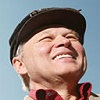18.4: Una forma de organizar
- Page ID
- 53149
Los métodos que hemos descrito en este capítulo proporcionan una forma organizada de diseñar modelos de interacciones ecológicas de orden superior. Las características de los modelos individuales puramente en forma RSN se pueden mezclar y emparejar según sea necesario para producir el modelo de orden superior, luego los parámetros resultantes pueden ajustarse a las observaciones o necesidades de modelado.
Por ejemplo, el espacio de fase biestable en las Figuras 10.1.3 a 10.1.5, con un punto Allee inestable combinado con una capacidad de carga estable, fue fácil de lograr combinando submodelos, cada uno con una de esas características. El resultado fue simplemente un sistema RSN con un término de\(N_1N_2\) producto cruzado agregado, pero ¿qué tan fácil habría sido concebir ese término a priori y percibir su suficiencia?
Además, se puede visualizar un modelo mixto en forma de Ecuación 18.3.1 en términos de (1) la tasa de crecimiento intrínseco de cada especie, (2) cómo cada especie afecta a la otra, (3) cómo cada especie se afecta a sí misma y (4) cómo esos efectos cambian con las densidades de población. En cierto modo, cualquier sistema de orden superior construido de esta manera puede ser visto como un sistema RSN en cada punto, pero como un sistema de orden superior en general.
En resumen, recomendamos con cautela este método de creación y organización de modelos ecológicos, y estamos ansiosos por escuchar de los éxitos y fracasos que pueda tener con él.
Los personajes que actúan en este libro —las ecuaciones del crecimiento poblacional, los parámetros y sus relaciones, las gráficas y los planos-fase— viven en variaciones y disfraces dentro de una enorme variedad de aplicaciones ecológicas reales, detalladas en miles de artículos científicos que podrás muestrear como tu el viaje continúa. Esperamos que hayan disfrutado de este libro introductorio y que le haya sido útil. Damos la bienvenida a sus comentarios sobre cualquier aspecto en absoluto. Un ebook nunca está terminado pero se puede mejorar constantemente.
—C.L., S.L., A.C.


